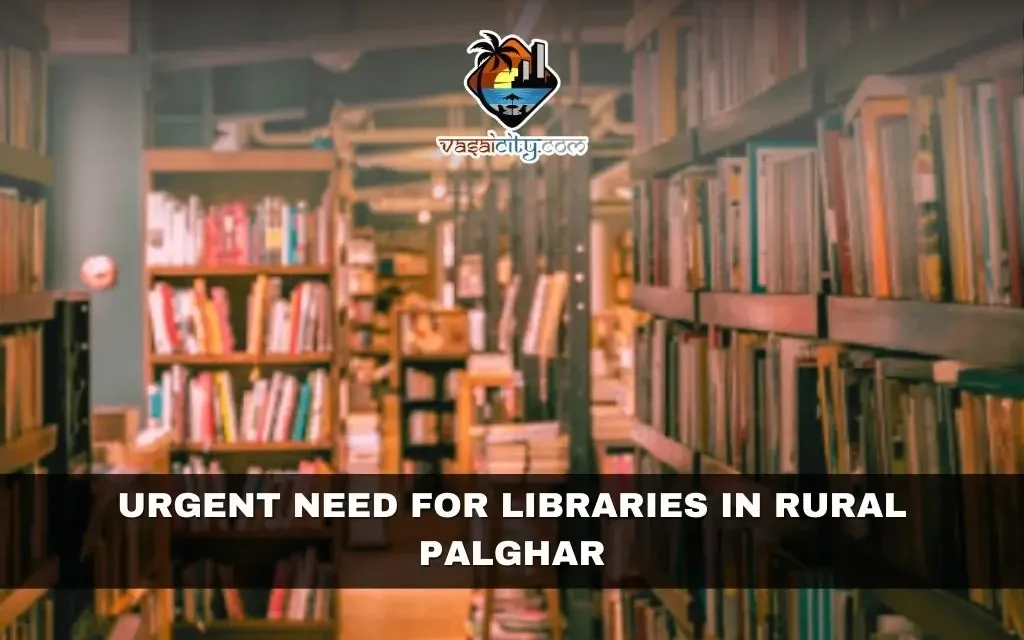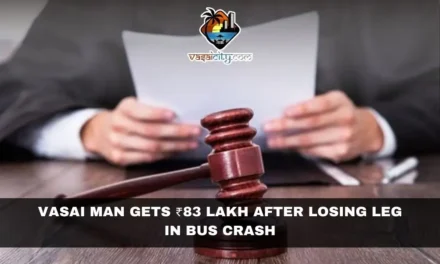A Tale of Two Realities: Libraries in Urban Vasai vs Rural Palghar
In an age when the government is encouraging reading and investing in knowledge through public libraries, the ground reality in Maharashtra’s Palghar district tells a different story. Out of the 36 government-approved libraries in the district, a staggering 26 are located in the urban areas of Vasai-Virar. That leaves only 10 for the rest of the district—which includes vast rural, tribal, and underdeveloped regions where education resources are desperately needed.
This lopsided distribution has created a visible gap between urban and rural access to knowledge. Places like Dahanu, Talasari, Mokhada, and Vikramgad—predominantly tribal and remote—do not have even a single well-equipped public library. For the youth in these areas, especially those preparing for competitive exams or pursuing education with limited means, the wait for a decent reading space continues endlessly.
Promoting Reading but Neglecting Libraries?
While cultural campaigns and educational programs promoting reading are on the rise across the state, the infrastructure needed to support these efforts is sorely lacking in several parts of Palghar. The government does allocate funds to build libraries—ranging from ₹50,000 to ₹3 lakh—through district administrations, municipal councils, and village panchayats. However, in many places, these funds are either not used for library development or diverted to other local needs.
Still, there are some villages and towns setting a positive example. For instance, Saphale, Chatalye, Mahim, and Kelve have made good use of the allotted funds. India Library in Kelve and Mayur Library in Makunsar are notable examples of how focused efforts can lead to well-functioning libraries. These have become vital spots for students preparing for exams and for senior citizens who simply enjoy reading.
A Failed Promise in Palghar Town
In Palghar town, the situation is more disappointing. A public library once functioned in Tembhode, but due to lack of proper facilities and limited response from the community, it was shut down. The library was moved to an old building near the Palghar railway station, and then again to the ground floor of the BSNL building under the name “Savitribai Phule Library.” Despite a formal re-inauguration by the municipal council last year, the library remains mostly unused. There’s a severe shortage of books, proper seating, and an overall lack of maintenance. Even worse, the building housing the library has been declared structurally dangerous by the local planning department.
This neglect has sparked anger and concern among residents who point out that ₹30 lakh had been earmarked for developing an e-library in the same town. With the physical library locked up and abandoned, questions are being raised: Where did the funds go?
A Bright Spot: The District Collector’s Library
Amidst this gloom, there is one success story. The library located on the second floor of the District Collector’s office in Palghar has seen a tremendous response from the youth. It boasts a collection of over 60,000 books and has more than 350 registered members. On an average day, 40 to 50 students visit the library to study and borrow books. The library’s collection includes materials for competitive exams, children’s literature, question banks, dictionaries, legal texts, newspapers, and works by renowned authors. All of this is made accessible for a nominal monthly fee of ₹50. Students often borrow books, study them at home, and return to exchange them for more—a system that truly supports learning.
Outstanding Local Libraries That Inspire
While government negligence is evident in many areas, local communities and youth groups are taking matters into their own hands. Libraries like the Ra. Hi. Save Library in Sonopant Dandekar College, the Jijaau Library in Wada, and the Raje Yashwant Public Library in Jawhar stand out as examples of what can be achieved with dedication. In Panchali, Kelwe, Bahadoli (Malwada), and Komane (Vasai), libraries have been built through community efforts and local funding.
These libraries are well maintained and highly used by local students and readers. They reflect how a motivated community, even with limited means, can build something impactful when given the right encouragement and resources.
Voices from the Ground
Sameer Maniyar, an avid book lover, notes, “There is no good public library in the district headquarters, Palghar. The municipal council has completely failed in providing access to books and learning for the new generation. If the government encourages local initiatives, these youth-led libraries could become models for the entire district.”
Amol Patkar, the head of the public library at the District Collector’s office, adds, “There’s a real need for government-approved libraries in the district. Many children come from poor families and can’t afford to buy books. A well-stocked public library could change their lives. Some panchayats have set a good example, but overall support from the government is still lacking.”
The Road Ahead
The current state of libraries in Palghar district highlights a deeper issue—one that goes beyond books and reading. It’s about access to knowledge, equal opportunities, and support for youth in rural and tribal communities. Urban areas like Vasai-Virar are enjoying a major share of library facilities, while interior regions struggle without even the basics.
Government funds exist. Community willpower exists. What’s missing is a coordinated, transparent, and committed approach to turning policies into ground realities. If libraries are truly the backbone of an informed society, then it’s time we strengthen that backbone, not just in cities, but across every village and tribal hamlet of Palghar.








